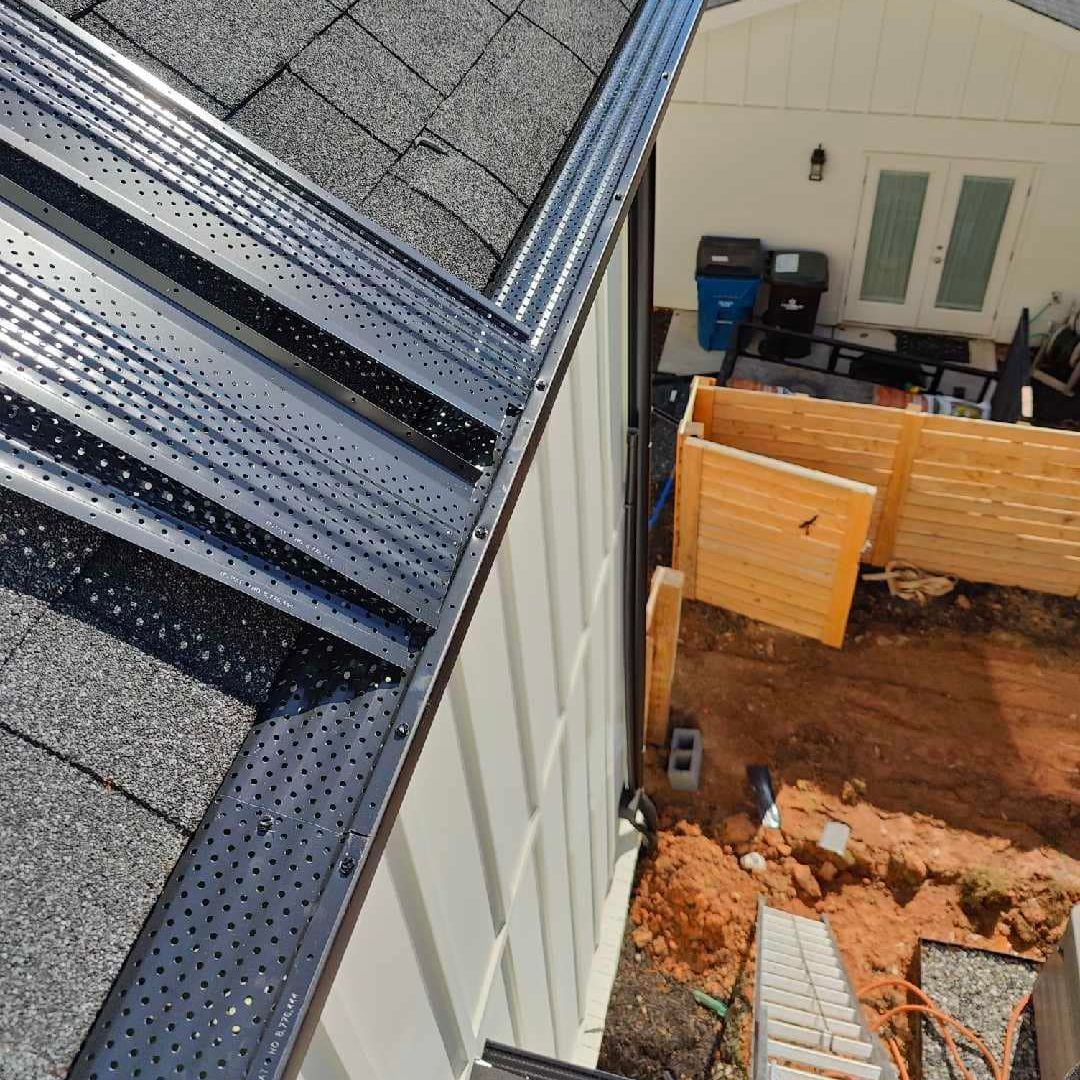7 Signs It’s Time to Replace Your Home’s Gutters
Water damage doesn’t wait, and neither should you.
You want peace of mind that your home is protected from leaks, rot, and structural issues. This post will show you the signs to watch for, allowing you to act before things get worse. If you stick with us through this article, you’ll learn how to avoid hidden repair costs and spot when to call a gutter installation company.
Why Is Gutter Replacement So Important?
Gutters guide rainwater away from your house. If they’re clogged, cracked, or not aligned properly, water spills over. It runs down your siding, seeps into your foundation, or pools around your landscaping. That’s how small problems lead to expensive repairs. Foundation cracks. Rotten fascia boards. Basement flooding.
In a region like North Georgia, with seasonal downpours and falling leaves, you need a gutter system that can handle the pressure.
What Are the Signs Your Gutters Need Replacing?
Knowing when it’s time to call a gutter installation company in Cumming can save you thousands of dollars. Let’s look at the seven most common red flags.
1. Your Gutters Are Pulling Away from the Roof
If your gutters are sagging or detaching from the fascia board, they’re not doing their job. This usually means:
- The fasteners are rusted or broken
- Water is pooling due to improper pitch
- The weight from debris or ice is too much
2. Water Spills Over the Sides When It Rains
If water is gushing over your gutters, it could be:
- A clog
- An undersized gutter
- A slope issue
This defeats the purpose of having gutters. Overflowing water will soak into your siding or puddle around your foundation.
3. You See Rust, Cracks, or Holes
Rust and cracks are more than cosmetic issues. Once metal gutters begin to corrode or crack, they’re beyond a quick patch. Water will always find a way out, and it’ll take a toll on the rest of your home. Patching may work short-term, but if the damage is widespread, replacement is the smarter move.
Tip: Look under your gutters after a rain. If you see water dripping or rusty streaks, the integrity of the material is compromised.
4. The Paint Around Your Gutters is Peeling
Exterior paint is made to stand up to weather. If it's peeling near your gutters, that means it’s constantly wet. Gutters should direct water away from the wall, not let it splash against it. This is an early warning sign. While it might just seem like an eyesore, it's usually a hint that something bigger is going wrong.
5. You Notice Mold or Mildew Near the Foundation
Water that flows off the roof and lands too close to the house can cause:
- Mildew smells inside
- Mold spots near the base of your siding
- Foundation softening
These signs often point to faulty or leaking gutters.
Fact: The Environmental Protection Agency (EPA) warns that indoor mold can trigger asthma and allergies. If your gutter system is contributing to mold growth, it’s time to fix it.
6. Your Basement Is Damp or Flooding After Rain
Basement moisture is almost always connected to water mismanagement around your house. Even if your gutters look okay, they might not be handling water properly. Improper drainage can send gallons of rainwater right to your foundation.
If your sump pump seems to work harder than it should after every storm, it’s a sign your exterior drainage (gutters and downspouts) may be failing.
7. Your Landscaping Is Washed Out
Have you noticed erosion around your home’s perimeter? Mulch or soil washed away after storms? This happens when gutters aren’t guiding water to a safe location. Instead, it’s dumping off the edge of the roof, washing everything out as it falls. Gutters are like steering wheels for rainwater. If they aren’t guiding it properly, the whole system loses control.
What Happens If You Don’t Replace Bad Gutters?
Bad gutters don’t just stop working. They actively cause damage. Waiting too long to replace them leads to:
- Wood rot on fascia and soffits
- Foundation cracks
- Basement flooding
- Roof leaks
- Pest infestations (standing water attracts mosquitoes and rodents)
Each of these can result in repairs that cost far more than a new gutter system.
How Long Should Gutters Last?
The lifespan of gutters depends on the material, climate, and maintenance. Here’s a quick breakdown:
- Aluminum: 20 years
- Copper: Up to 50 years
- Vinyl: 10–15 years
- Steel: 15–20 years (but may rust sooner)
In North Georgia’s humid climate, aluminum is a common choice for its rust resistance and value. But even the best systems wear out, especially if they’re neglected.
Should You Install Gutters Yourself?
It’s tempting to save money with DIY installation. But mistakes can lead to:
- Improper slope, causing water to pool
- Loose fasteners that detach over time
- Incorrect downspout placement
Unless you’re experienced on ladders and know the proper measurements, leave it to the pros. Improper installation usually costs more in the long run. Use a trusted
gutter service to make sure the job gets done right the first time.
How to Choose the Right Gutter System
When replacing gutters, consider:
- Size: 6-inch K-style gutters are ideal for most homes in the Southeast
- Material: Aluminum is lightweight and corrosion-resistant
- Color: Choose a gutter color that blends with your trim or roof
- Gutter Guards: Help reduce clogs from leaves and debris
Talk to your installer about options that match your roofline and water flow needs.
What Kind of Gutter Guards Work Best?
Gutter guards are protective covers that block leaves, sticks, and pine needles.
Popular options include:
- Mesh screens
- Micro-mesh guards
- Reverse curve systems
Each has pros and cons. Some block smaller debris better but cost more. Others are easier to clean but let small particles through. If you’re in a wooded area, guards can prevent constant cleanouts.
What Should You Do If You Suspect a Gutter Problem?
Inspect your gutters after a rainstorm. Walk around your home and look for:
- Overflow or dripping
- Pooled water at the foundation
- Streaks on the siding
- Sagging gutters
Take pictures and note any damage. Then, call a professional for an inspection. If you’re in North Georgia, Master Craft Gutters can evaluate the condition and recommend what’s best, whether that’s repair or replacement.
Conclusion
Failing gutters don’t just look bad. They lead to real problems like mold, leaks, and foundation erosion. This post showed you the seven signs to watch for and explained how damage starts small, then escalates. Acting early protects your house and saves money.
If you’ve seen water pooling near your home or your gutters are pulling away, it’s time to call in a professional.
At Master Craft Gutters, we specialize in gutter replacement across North Georgia. We build custom-fit gutter systems using high-quality materials and modern designs. Our process is simple. We inspect your gutters, give you honest feedback, and get the job done without the upsell.
We’re a veteran-owned business that believes in straightforward service. No gimmicks. No fluff. Just durable gutters that keep your home dry.
Reach out today for a free estimate, and take the first step toward protecting your home.



